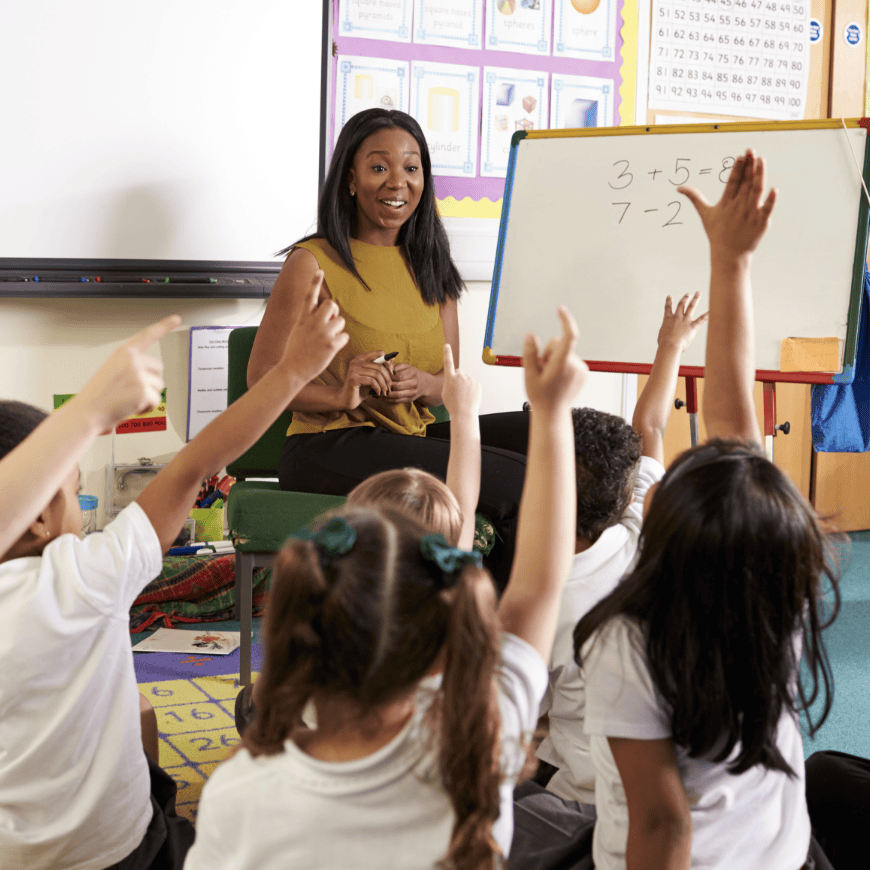Posted in: Aha! Blog > Eureka Math Blog > Implementation Support > What About My Students? How Preparation and Collaboration Can Help All Students Achieve
FROM THE FIELD
Before anything else, preparation is the key to success” — Alexander Graham Bell
I spent most of my early teaching career admiring many very talented teachers in my school and trying to emulate some of their strategies. I thought being a great teacher was something I had to work hard to become, but, in retrospect, I invested my effort in the wrong way. I observed the classrooms of these ‘gifted’ teachers, focusing on how each classroom was organized — the posters on the walls and the arrangements of the seats. Conversations with the teachers about how they planned their lessons, studied the teaching materials, made connections, and encouraged critical thinking would have been a much better use of my time since this would have allowed me to focus on crucial components that would drive my students towards increased achievement.
There is a resource that is incredibly beneficial for the success of your students and one that is probably underutilized- your colleagues! In a recent professional development session in Hartford, CT, a fellow author for Eureka Math, Danielle Goedel, and I were inspired by the ideas generated from our participants. Their collaboration and willingness to share and reflect had a tremendous impact on the entire group. Many of these teachers commented that their students needed lesson modifications. In fact one of the most common questions posed is “How can I modify the curriculum for my students?” As a response to this question, we suggest YOU are the single greatest resource for the students in your class
By studying the math in the lessons, analyzing the complexities, collaborating with your colleagues, and preparing your delivery of the lessons, you will reap amazing rewards as you try to move your students toward achieving desired student outcomes.
Let’s look at Example 3 and Exercise 3 from Grade 7 Module 3.

As participants in the group studied the teaching materials and noted the increasing complexities between the two problems shown above, they noted the following:
- The problems contain the same angle relationship but there are 4 angles in Exercise 3 instead of 3 angles.
- Instead of x°, there is now (x+1)° in Exercise 3
As the discussions within each team continued, one participant noticed that students are not actually asked to find the value of x, so (x+1)° can actually be considered a distractor. She suggested preparing a scaffold for the students in a particular class, replacing the (x+1)° with another variable such as y°. Another participant realized that this modification really simplifies the problem as it makes Example 3 and Exercise 3 very similar. If students are successful in completing Example 3 with their teacher, their ability to successfully complete Exercise 3 independently is much higher. Using a sticky note to cover up the distractor and substitute y° would be a useful modification for this problem. The teacher is able to place and remove the sticky as students become comfortable with the concept, temporarily eliminating the distractor and fostering growth in learning
Another participant strove to demystify that tricky (x+1)° by changing the measurements of the other angles to (58+1)°, (102+1)°, and (166+1)°. Seeing this modification may help alleviate any worry students experience with the added complexity of the term (x+1)°.

One of the goals of the professional development session, “Preparation and Customization of a Eureka Math Lesson,” is to make intelligent decisions to guide your students from the beginning of the lesson, up the ladder to the end of the lesson, focusing on the desired student outcomes an end goal. The ladder analogy is used to describe the sequence of learning, where the first rung of the ladder is the beginning of the lesson and the highest rung of the ladder is the end of the lesson, which is the desired student outcome(s). The ladder analogy is useful in thinking of the lowest rung as the students’ point of last success and the highest rung as the problem that students need to complete successfully
Often, rungs of the ladder are spaced too far apart, and scaffolding problems are needed to assist students who are unable to reach the next rung. Other times, the rungs of the ladder are too close together and students are well able to reach the next rung and maybe able to skip a rung. The beauty of this preparation process is that the prepared teacher is able to anticipate stumbling blocks because they have:
- done the math prior to teaching the lesson
- analyzed the complexities of the problems
- prepared scaffolding problems in case they are needed during the lesson
Collaborating with colleagues is a great way to identify and address potential stumbling blocks and to help each student move successfully and confidently toward success on the Exit Ticket, thereby meeting the lesson’s objective.

Imagine not having done the work listed above prior to teaching the Grade 7 lesson. Would you have been able to modify the problem and create spur-of-the-moment scaffolds to prevent your students from falling into the pit of unproductive struggle? Finding time to do this analysis and collaborate with colleagues may be hard, but it is certainly worth the effort since it benefits those who matter most- our students!
Identifying the last point of success, then collaborating with colleagues about how to modify lessons to accommodate the needs of the students (with scaffolds or extensions) can lead to increased success, more positive attitudes, and reveal additional connections to prior learning. Time is precious. As you prepare for a successful year, use your planning and collaboration time with colleagues wisely to maximize your impact on student learning.
This post is by Dawn Pensack who is a Grades 5–6 Eureka Math writer. She taught math for 10 years (mostly in Grade 6).
Submit the Form to Print

Great Minds
Great Minds PBC is a public benefit corporation and a subsidiary of Great Minds, a nonprofit organization. A group of education leaders founded Great Minds® in 2007 to advocate for a more content-rich, comprehensive education for all children. In pursuit of that mission, Great Minds brings together teachers and scholars to create exemplary instructional materials that provide joyful rigor to learning, spark and reward curiosity, and impart knowledge with equal parts delight.
Topics: Implementation Support











